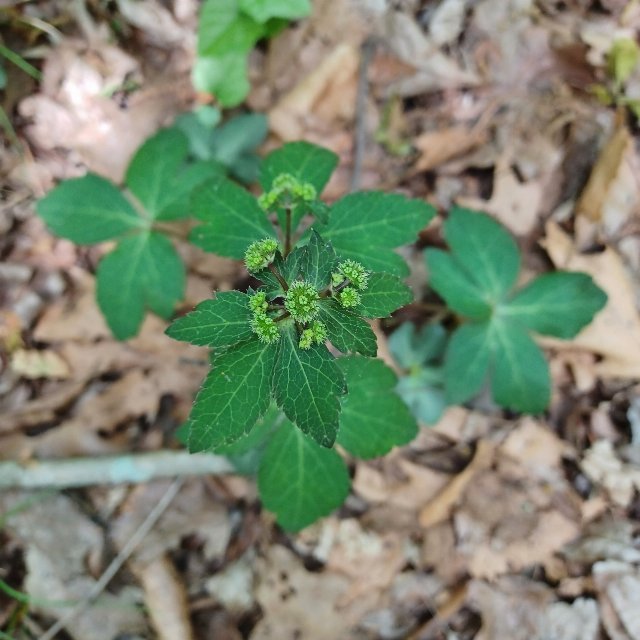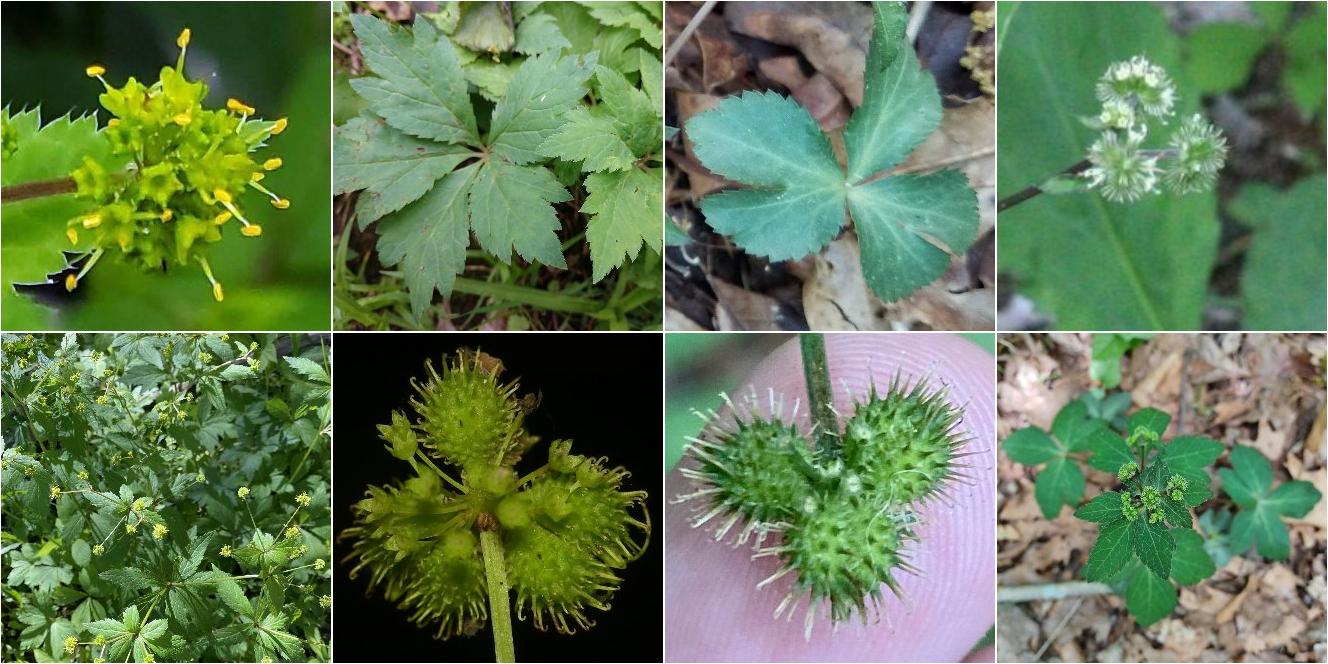Clustered Blacksnakeroot (Sanicula odorata) vs. Small's Blacksnakeroot (Sanicula smallii)
Updated May 31st, 2022These species are sometimes confused, owing in part to several widely-circulating misidentified specimens and photographs that have been reproduced on numerous websites. They are easy to distinguish by leaf shape, color, and texture, as well as by differences in inflorescence or fruit. There is also less overlap in habitat between these species than between most Sanicula; S. odorata prefers sunnier, moister, more disturbed habitats, and is restricted to open deciduous woodlands, whereas S. smallii prefers shadier, drier, less disturbed habitats with more intact leaf or needle litter, and can be found in both deciduous (especially oak) and mixed pine-hardwood forest.





